Rocky Mountain Elk
USFWS photo
Rocky mountain elk (Cervus canadensis) is a large distinctive ungulate distributed throughout the intermountain region of western Canada and US. Large – adult males can be more than 900 pounds – and distinctive, elk have important ecological, cultural and economic importance across the Crown of the Continent ecosystem. Elk exhibit very characteristic seasonal movements and behaviors that influence their social structuring, reproductive strategies and interactions with humans. Most elk typically spend summers at higher elevations grazing on grasses and forbs with cowcalf herds generally separate from males. During the fall rut, males compete for females as social dynamics morph into harems of females guarded by mature bulls. In winter, elk tend to move downhill to avoid heavy snow and switch diets to include more browsing on shrubs and saplings. Elk have profound cultural and spiritual significance for many Crown residents. The species is also economically important as a food source for many. Harvest permits provide important funding for provincial and state wildlife management agencies. However, elk can also be viewed as a nuisance to some human communities as they pose a threat to motorists and sometime raid hay piles when natural forage is in short supply.
PHASE 2 DOCUMENTS
CONCEPTUAL MODEL PHASE 2
This conceptual model is intended to convey a situation analysis for the Rocky Mountain Elk (hereinafter referred to as feature) in the transboundary Crown of the Continent Ecosystem. It is a working diagram that captures life history characteristics important to feature persistence as well as key threats and biophysical factors and the relationships among these elements. The model strives to illustrate important cause-and-effect relationships that impact this feature. Together, the model and other analyses are used:
to help stakeholders arrive at a shared understanding of this feature
for discussion with subject matter experts
to develop a spatial design: where do opportunities exist for conservation of the feature on this landscape?
to develop a strategic design: what are the strategies and actions likely to result in long-term persistence of the feature?
Orange Box - Driver: The indirect threats, opportunities, and other important variables that positively or negatively influence direct threats. Also called a “root cause” or “indirect threat,”, drivers are pervasive, underlying anthropomorphic activities or conditions that require policy level interventions to lessen their impact on landscape features.
Pink Box - Direct Threat: Human actions (e.g., overfishing, urban development) or natural phenomena (e.g., wildfire) that immediately degrade one or more landscape features. Natural phenomena are considered direct threats when their relative impact is increased by human activities.
Red Chip: Indicates a ‘high’ level threat to the landscape feature, as identified by subject matter experts. These threats are carried over to spatial design optimization models if reasonable spatial data is available.
Yellow Chip: Indicates a ‘lower’ level threat to the landscape feature, as identified by subject matter experts. This is not to say these direct threats are not significant; rather the urgency/importance of addressing these threats are secondary to high threats.
Tan Box - Biophysical Factor: represent any factor (including, but not limited to traditional stresses) that connect a driver or direct threat to a focal landscape feature. They are used to show the mechanism of how drivers and direct threats affect a landscape feature(s).
Rounded Green Box - Landscape Feature: Ecological (e.g., species, community, ecological process) and Cultural (e.g., land access) elements that represents biodiversity or human well-being needs found in the Crown of the Continent LCD project area. Landscape Features are the units around which we set goals, carry out conservation actions, and measure conservation effectiveness. Landscape Features are selected by the LCD Leadership Team as representatives of broader Cultural and Ecological elements of the Crown landscape: we do not identify selected as ‘priorities’ or ‘surrogates’ but rather measurable units that are important to all stakeholders.
Green Ovals - Key Attribute: Attributes of landscape features that are important to the feature’s long-term persistence. Attributes are intrinsic values of the feature but also represent attributes we can measure and map and therefore provide opportunities to develop conservation strategies around.
Black Arrows: show the influence over or relationship that each factor has to other factors. Some drivers may affect or influence other drivers and/or more than one direct threat. Likewise, a direct threat may affect >1 other threat, landscape feature or key attribute of a feature. Arrows inform on critical relationships among landscape elements and potential paths along which to develop strategic approaches for conservation intervention or investment.
— Following the Conservation Standards (formerly Open Standards for the Practice of Conservation)
Citations
Singer, F. J., and L. C. Zigenfuss, compilers. 2002. Ecological evaluation of the abundance and effects of elk herbivory in Rocky Mountain National Park. Colorado, 1994-1999. Final report to the National Park Service. U.S. Geological Survey and Natural Resources Ecology Laboratory, Colorado Stale University. Open File Report 02-208. 268 pp.
Sherrill, K.R., C.P. Melcher and N.B. Carr. 2017. Mule Deer. Chapter 28 in Wyoming Basins Rapid Ecological Assessment. Carr, N.B. and Melcher, C.P., eds., 2017. U.S. Geological Survey Open-File Report 2015–1155, 896 p., https://doi.org/10.3133/ofr20151155.
Bureau of Land Management. 2012. Middle Rockies Rapid Ecoregional Assessment. Appendix E. https://landscape.blm.gov /REA_General_Docs/MR_REA-II-3-C_Appendix%20E-FineFilter%20CEs_Final_1-4.pdf
PHASE 2 OPTIMIZATION MAP (Draft)
This draft map represents a spatial optimization approach to identify conservation opportunity for the identified feature. Input data for the feature include estimates of occurrence, density or habitat affinities, and data describing high-level threats. The 30% and 70% optimization targets represent the range of plausible conservation objectives for the feature. These targets will be refined at stakeholder workshops during Phase 3 of the LCD process. Optimization models are developed using Marxan software.


